Autos
Spirited SUVs
Dodge Durango, Land Rover Defender 130 hit the mark
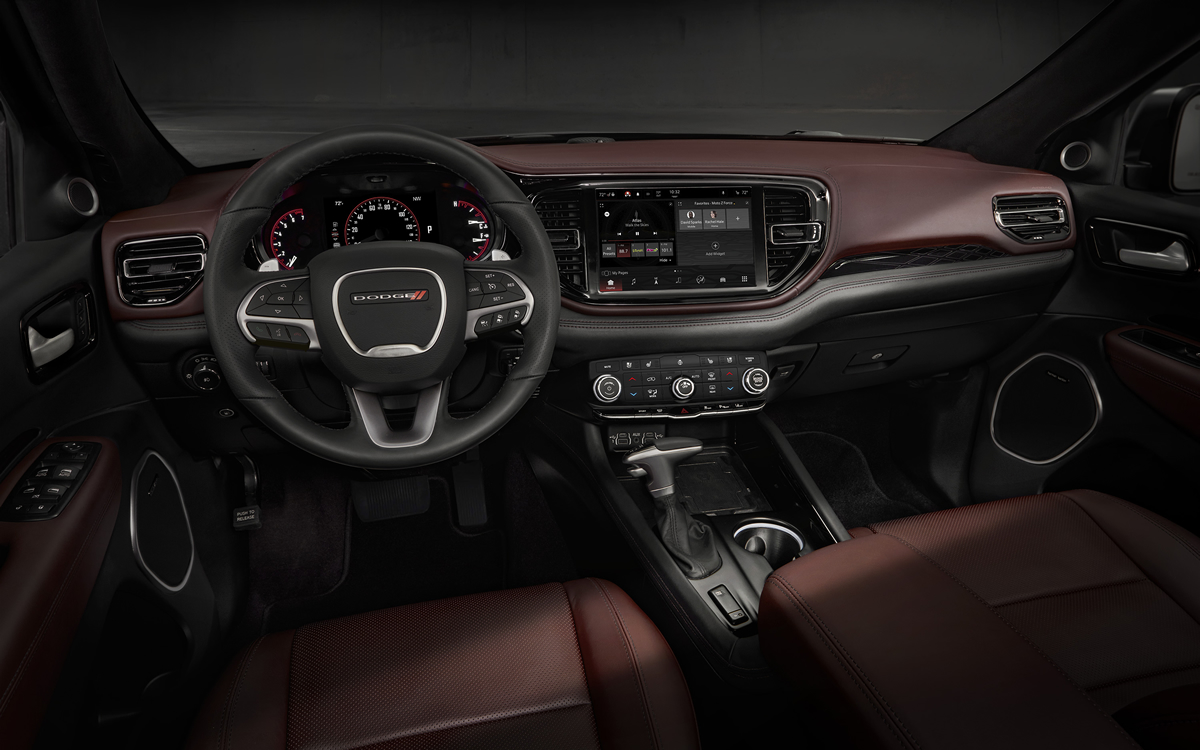
While many EVs are fun, eco-friendly and increasingly affordable, it’s sometimes hard to resist the siren call of a captivating ride with an old-school combustion engine. For me, this includes the Dodge Durango R/T and Land Rover Defender 130—two midsize SUVs that really get my motor running.
DODGE DURANGO
$41,000
MPG: 19 city/26 highway
0 to 60 mph: 7.4 seconds
First produced 25 years ago, the Dodge Durango was a stand-in for anyone who eschewed minivans but still needed a workaday vehicle for hauling kiddos and soccer gear. In other words, you wouldn’t see Billy Porter as Fab G in “Cinderella” ditching his glittery-orange Maybach for a Durango.
Or would you? Thanks to various updates, today’s Durango is fancier, fitter and faster than ever—especially in the higher trim levels. I test drove the RT version, which is a few steps above the mid-range GT and comes with a magical V8. Zipping from 0 to 60 mph in just 6.2 seconds was a thrill, though the less-thirsty V6 is fine for everyday commutes. And until it is discontinued at year-end, the super-fast SRT Hellcat model—costing an eye-popping $104,000—allows speed jockeys to hit 60 mph in just 3.6 seconds.
What I like most about all Durangos is how nimbly these brawny-looking haulers handle weaving in and out of traffic. Not as slick as a true sport sedan perhaps, but still. And even though there are plenty of all-new and radically redesigned SUVs, the basic functionality in the Durango is impressive: User-friendly infotainment system, acres of second-row legroom, and more stowage and towing capacity than most competitors. One downside: The amount of safety gear, while decent, is less than expected. Only a backup camera and blind-spot monitor are standard, though adaptive cruise control, automated emergency braking and other driver-assistance features are available options.
Luckily, the Durango doesn’t skimp on other features. Even the base-model comes loaded: LED headlights, keyless entry/ignition, roof rails, three-zone automatic climate control, smartphone integration and more. By the time you get to the R/T, there are beefier tires and automatic high beams, as well as a sunroof, nav system, Wi-Fi hotspot and larger touchscreen. Instead of the standard six-speaker stereo, the R/T comes with a nine-speaker Alpine stereo with subwoofer. But if you really want to get the party started, then splurge on the thundering 19-speaker Harman Kardon system.
A vehicle for soccer moms and dads? Pfft, not anymore.
LAND ROVER DEFENDER 130
$68,000
MPG: 17 city/21 highway
0 to 60 mph: 7.4 seconds

The first Land Rovers were boxy military-inspired vehicles introduced in 1948. Four decades later, the Defender arrived on U.S. shores. By then, it looked like a wayward Jeep for second-rate safari expeditions, which wasn’t exactly a draw. The Defender soon exited American showrooms but was sold elsewhere until 2016, when it was retired from service.
Or so it seemed. In 2020, the Defender was back, rereleased with an utterly modern makeover. This latest Defender is a complement to the Land Rover Discovery, a tamer SUV with softer styling and a family-oriented vibe. While both vehicles have a renowned history of off-road prowess, only one can be alpha. That would be the Defender, with its tall ground clearance of 11.5-inches and an absurd wading depth of 35.4 inches.
Along with the standard two- and four-door models, a new long-wheelbase Defender—the 130—joins the lineup this year. That’s the vehicle I test drove for a week. Like all Defenders, it has a Jekyll and Hyde character: off-road ruggedness, but refined and limo-like when wheels hit the pavement. At 13.3 inches longer than the standard four-door model, this extended Defender has three rows of seating to accommodate eight passengers comfortably. Alas, with the third row up, there’s not much cargo room. But anyone stuck in the back will find the journey pleasant: There are USB ports, optional seat heaters, a tall roofline for decent headroom, and a separate sunroof with a manual shade.
While no V8 option is available, you can choose from two six-cylinder engines that are both mild-hybrids. Considering the Defender 130 weighs 5,500 lbs., handling is surprisingly spot on. So are all the cabin niceties, like sleek chrome trim, real wood veneer, large touchscreen, air-purification system, four-zone climate control, heated second- and third-row seats, privacy glass and premium Meridian sound system. As I found when driving other Land Rovers, it took me time to relearn how to operate the less-than-intuitive infotainment system and climate control dials, which also adjust the heated/ventilated seats.
But that’s a small complaint, considering how much this large Defender has to offer.
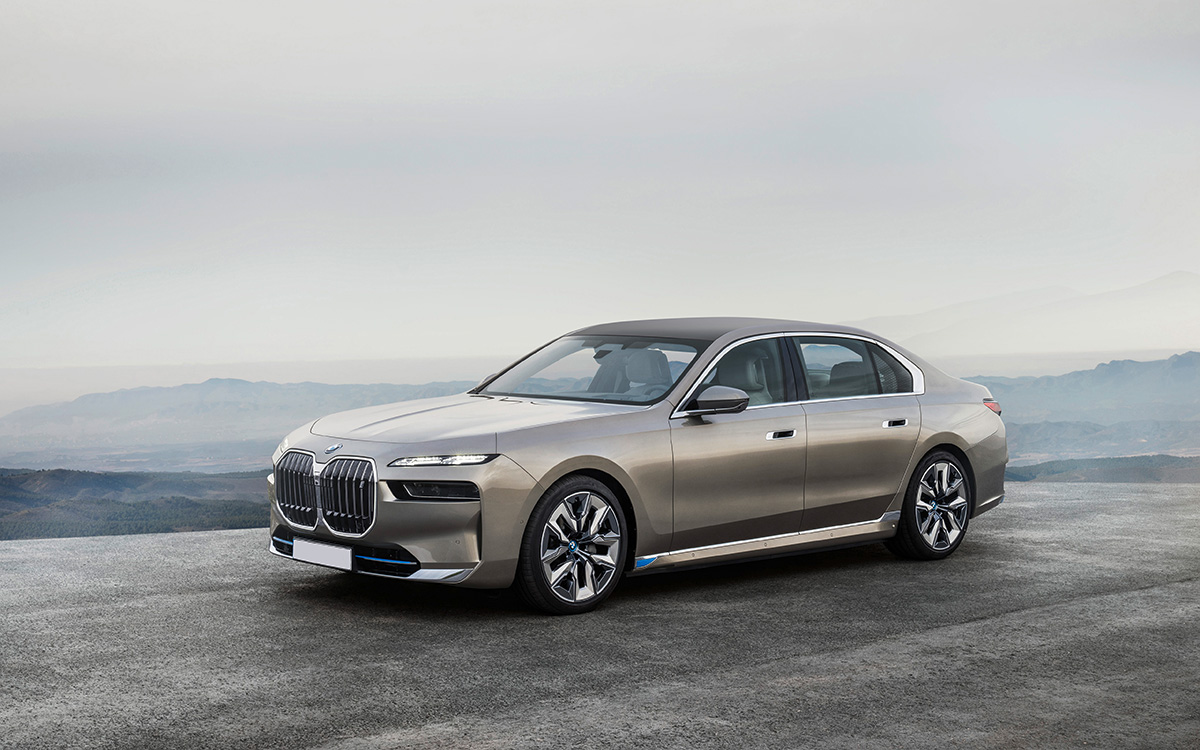
Sometimes it’s good to be a fairy godmother. That’s how it was for me when organizing a surprise dinner party for my husband Robert, who was celebrating a milestone birthday.
Event planning isn’t my thing, yet somehow the stars aligned. It seemed like all I had to do was wave a wand and — voila! — the magic began.
Make reservations at a fave intimate restaurant, which often gets booked months in advance? Zing! Ensure that family and childhood friends from across the country could all attend the same weekend? Zing! Find a handsome pianist to serenade us with Broadway show tunes. Zing again!
The only thing missing: a stunning chariot. But then, at the last minute, my test car for the week turned out to be—zing!—the all-electric BMW i7 xDrive60 glam sedan.
BMW i7 xDrive60
$121,000
MPGe: 87 city/95 highway
Range: 291 to 321 miles
Fastest charging time: 212 miles in 34 minutes (80% charged)
PROS: Hyper fast. Sublime cabin. Dazzling tech.
CONS: Pricey. So-so cargo area. A sedan in a world of SUVs.
IN A NUTSHELL: To drive or not to drive, that’s the question with the BMW i7. Rarely is it more exciting to be the passenger than the driver in a sports sedan, especially a Bimmer. But as I chauffeured my husband to the restaurant on his birthday, he seemed to be having way too much fun enjoying the dizzying array of creature comforts.
Spa treatment. The futuristic seats, made of quilted Merino leather, are as plush and comfortable as anything from Roche Bobois. But the optional cashmere/wool fabric looks and feels even better. All seats—both front and rear—come with ventilation and heating that activates much quicker than in most cars. The superb massage function does bodywork like a real masseur—but without the need to tip 20% when your session ends.
Concert-hall acoustics. Other high-priced rides offer premium audio, but the standard Bowers & Wilkens stereo in the i7 is bravo: 18 speakers and 655 watts. Better yet, my test car had the much-ballyhooed Diamond Surround Sound System, with 36 speakers powered by a 1965-watt amplifier. Yes, two of those speakers use actual diamonds to increase clarity. The result is perhaps the best-sounding vehicle acoustics ever.
IMAX-like screen. The Rear Executive Lounge Seating package adds a reclining right rear seat with footrest and a center console with foldable table that serves as a floating desk. Think first-class seating on an airplane. Most impressive is the huge, 31-inch 8K theater screen that drops down from the ceiling and comes with Amazon Fire capability. All rear window shades lower and the panoramic-glass roof shade closes when in theater mode. Built tastefully into the armrest on each rear door is what looks like an Apple iPhone to control the rear lighting, movie screen and other functions. Any home theater system should be so good.
Racecar features. Up front, the driver is spoiled with many other goodies. A curved digital screen, the same as in the cutting-edge BMW iX SUV, houses a 12.3-inch instrument cluster and 14.9-inch infotainment monitor. Two motors—one for each axle—creates an impressive 536-horsepower. Press the accelerator and—whoosh!—the i7 sprints from 0 to 60 mph in just 4.1 seconds. The amazing auto-leveling suspension absorbs potholes and speed bumps as if this 6,000-pound sedan were floating on air.
Rolls-Royce aura. BMW, which also owns Rolls-Royce, has sprinkled the i7 with stately design cues. This includes softer, more graceful styling and none of the severe, chiseled angles of previous BMWs. Other plusses: Swarovski crystals in the headlights and 22 precision-focused LEDs in the high beams. But the illuminated grille, while impressive, has a more ominous vibe. (Stephen King’s Christine, anyone?)
Full-size comfort. The i7 is a full-figured ride, more than 17-feet long and 6.4-feet wide. Here’s where the automatic parking comes in handy, allowing this BMW to parallel or perpendicular park itself. Trunk capacity is 18 cubic feet, which is decent but less than some competitors. Inside, though, there are plenty of clever storage compartments.
A pretty penny. Full of options, my test car was a wallet-busting $152,000. But that’s a bargain—well, sort of—compared with the high-performance i7 M70. With 650 horsepower and a 0-to-60 time of 3.5 seconds, the M70 is the fastest all-electric M car ever made. It also costs $169,000.
Alas, such sticker prices are too rich for my blood. Sorry Robert, maybe if we win the lottery.
Autos
Seductive sport-utes: Buick Evista, Subaru Outback
Two vehicles that punch way above their weight
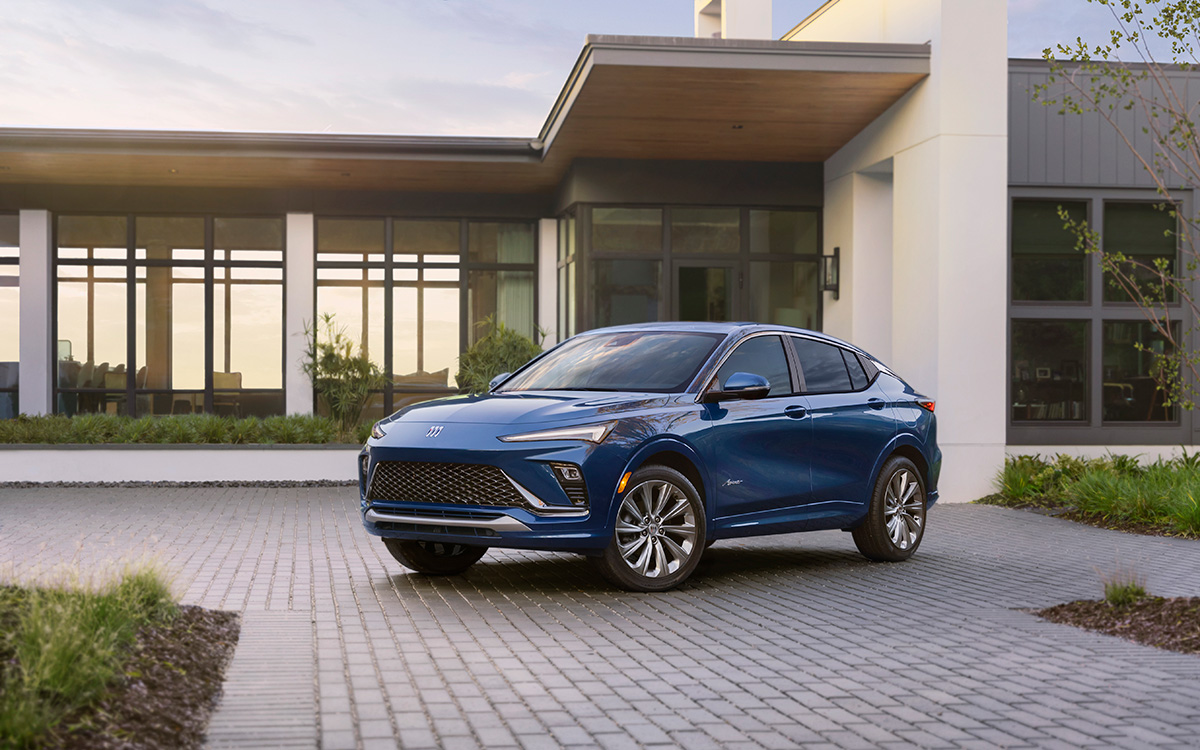
Two recent sport-utes are surprise hits this year. Well, at least they are for me. That’s because the all-new Buick Envista and tried-and-true Subaru Outback both deliver more than expected—a lot more. Call it bait and switch, but in a good way.
BUICK ENVISTA
$24,000
MPG: 28 city/32 highway
0 to 60 mph: 9.3 seconds
Maximum cargo room: 42.0 cu. ft.
PROS: Yowza design, yowza cabin, yowza price
CONS: Modest power, no all-wheel drive, so-so stereo
IN A NUTSHELL: If imitation is the sincerest form of flattery, then the Buick Envista is practically a Teutonic clone. Just a few months ago, I wrote about the BMW X6—a riveting ride with glam looks, oodles of high-tech gizmos and an uber-comfy interior. But all that awesomeness comes at a price: $75,000—and that’s just the base model. Choose a higher trim level or load up on chichi extras and this bad-ass Bimmer easily tops $100,000.
Not so the Buick Envista, an all-new compact that starts at just $24,000. I test drove the high-end Avenir version, which was—wait for it—only $5,000 extra. And the Avenir comes standard with 19-inch nickel-finish wheels, upgraded suspension, power liftgate, keyless entry, remote start, heated seats, heated steering wheel and other goodies.
After doing a double take on the Envista’s exquisite exterior, I did the same when slipping behind the wheel. Yep, there definitely is a Buick logo inside. But everything else could come from the kicky cabin of a BMW X6. This includes a fully digital dashboard stretched wide beneath the windshield, as well as stylish trapezoidal air vents, tasteful aluminum trim, armrests sculpted seamlessly into the doors and well-bolstered sport seats.
Turn on the stellar stereo in a BMW X6 and you could be in the front row at a Queen and Adam Lambert concert. In the Envista, the audio may not be quite as impressive, but those six speakers and nicely calibrated noise-cancellation function still provide a pleasant experience.
This bantamweight Buick also has a surprising amount of space for passengers and cargo. Headroom is more than adequate, even for tallish backseat passengers. And folding those rear seats more than doubles the overall stowage.
All Envistas boast a bevy of safety gear, including lane-departure warning, lane-keeping assist, automatic braking, forward collision warning with pedestrian protection, and a “following-distance” indicator to monitor vehicles ahead of you. Oh yes, there’s a superb backup camera—high definition, no less. As with the BMW X6, this camera helps offset limited visibility from the small rear window in the sharply sloped roofline.
For less than $1,000, you can add a blind-spot monitor, rear cross-traffic alert, adaptive cruise control, rain-sensing wipers, rear-park assist and heated side mirrors. Such options are much pricier on other vehicles.
No, this Buick is not a NASCAR rival. There’s no raw power or intimidating exhaust rumble. But the Envista’s acceleration, handling and braking are all solid, especially in commuter traffic.
Affordable. Economical. Thrifty. Call it what you will, the Buick Envista is half the price of an average vehicle today. That’s impressive for this “Mini-Me” of a BMW X6.
SUBARU OUTBACK
$29,000
MPG: 26 city/32 highway
0 to 60 mph: 8.8 seconds
Maximum cargo room: 75.6 cu. ft.
PROS: Relaxed ride, spacious interior, off-road maven
CONS: Slow base engine, dated touchscreen, less fuel-friendly
IN A NUTSHELL: Station wagon? Sport-ute? All-activity vehicle? The Subaru Outback is all three, mixing the agility of all-wheel drive with sedan-like handling. The result: A composed ride equally at home on highways or trailways.
The overall look is sleeker than a Ford Bronco but less luxe than a Lexus RX. While the Outback was last redesigned in 2020, each year Subaru makes at least a few improvements. For 2024, this mid-sizer receives minor styling updates, as well as more standard features on many of its nine trim levels.
I test drove the top-of-the-line Touring XT for a week. At $41,000, the price is a whopping 40% higher than the base model. But the amenities rival what many competitors offer on vehicles costing twice as much. Along with heated/ventilated seats, heated steering wheel and heated power-folding side mirrors, there are plenty of other creature comforts: hands-free liftgate, water-repellant faux-leather upholstery, windshield wiper de-icer, tinted rear windows and premium 12-speaker Harman Kardon stereo.
Curiously, the dual 7.0-inch touchscreen seems stuck in the 1990s. But you can choose a vertical, iPad-like 11.6-inch monitor instead.
A front-view camera with 180-degree viewing angle makes it easy to peak around corners, while a digital rearview mirror allows you to see behind the vehicle even if the cargo area is fully loaded. Other safety items include adaptive cruise control, blind-spot monitor, pre-collision braking, lane-departure warning and drowsy-driver alert.
Perhaps the only downside is the pokey 182-horsepower base engine. Skip it, and go for the quicker, more satisfying turbo.
Feature-laden but frugally priced, the Outback is similar to the Buick Envista — two vehicles that punch way above their weight.
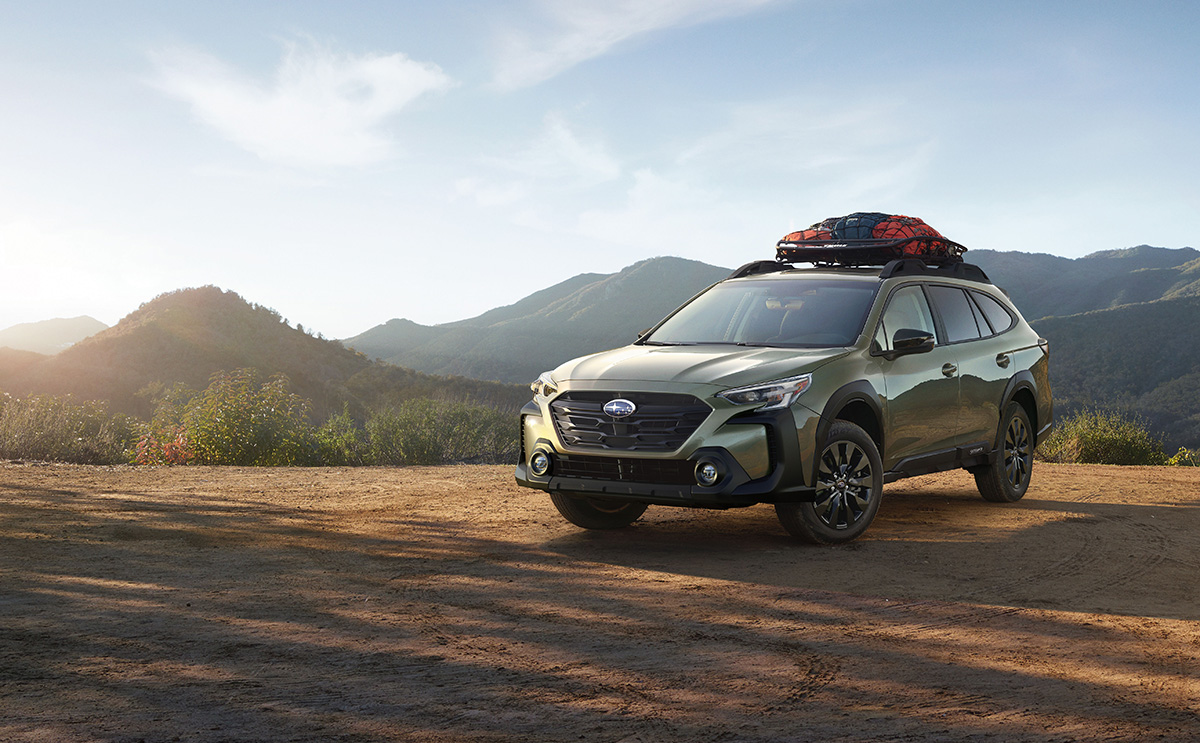
Autos
Sport haulers: Jeep Grand Cherokee, Mercedes GLE-Class
Updated cabins, adept handling, and more
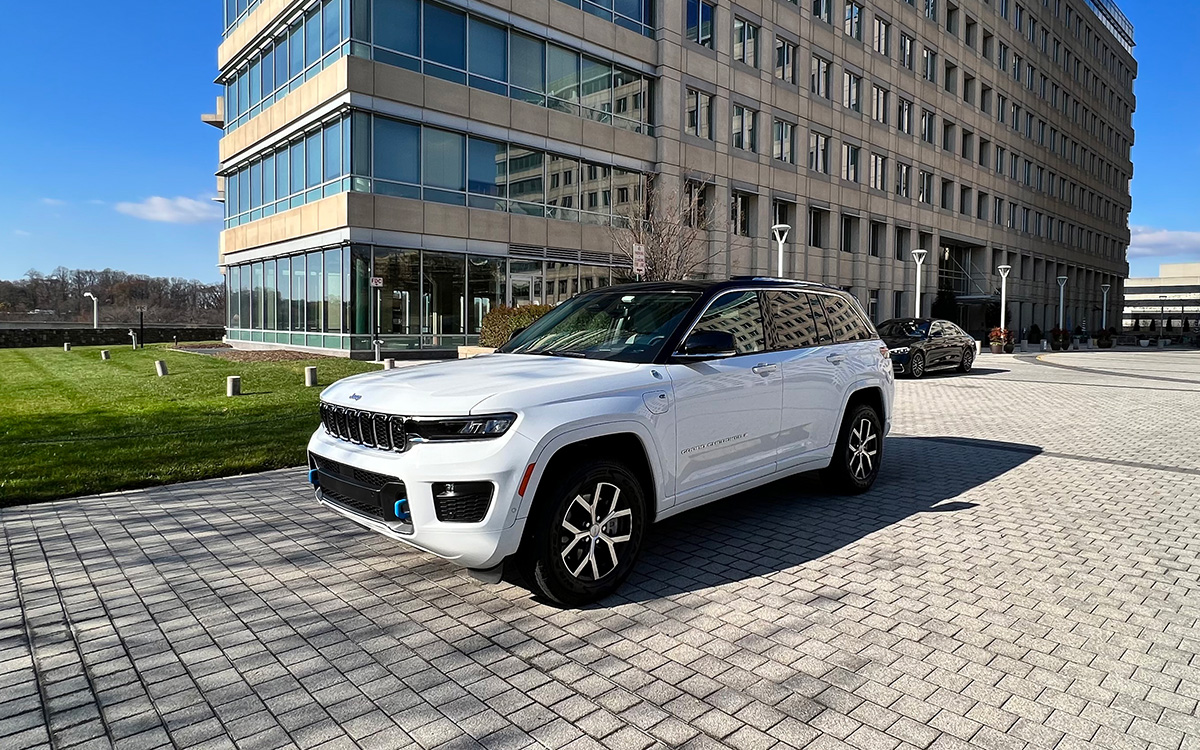
Now that March Madness and the Masters are over, it’s time for, well, everything else. For my husband and me, this means water sports, as in kayaks and rowing sculls, which is why we trekked to the Potomac for the George Washington Invitational regatta last weekend.
Alas, high winds splashed cold water on the event, canceling much of it. But there was still plenty of spirited camaraderie to rival “The Boys in the Boat.”
And I was reminded of my time years ago as a rower with D.C. Strokes, ferrying teammates to races up and down the East Coast. Back then my ride was a dated, rather cramped four-door sedan.
If only we could have paddled around in a sporty SUV like the two reviewed here. Now that would have been some smooth sailing (wink-wink).
JEEP GRAND CHEROKEE
$40,000
MPG: 19 city/26 highway
0 to 60 mph: 7.5 seconds
Maximum cargo room: 37.7 cu. ft.
PROS: Updated cabin, adept handling, strong towing
CONS: So-so gas mileage, no third row, pricey trim levels
IN A NUTSHELL: Rough, tough and buff. It’s doesn’t get much more butch than a Jeep. This year’s Grand Cherokee is no exception, with rugged looks, expert off-road capability and better-than-average towing capacity of 6,200 pounds.
There are a dizzying number of trim levels—more than a dozen—starting with the barebones base-model Laredo at an affordable $40,000. The lineup tops out with the Summit Reserve 4xe PHEV, which is almost twice the price at $76,000 and one of various plug-in hybrid versions available. Those plug-in hybrids can drive up to 25 miles on all-electric power before the four-cylinder gas engine kicks in. Otherwise, you can choose from a standard V6 or V8. Gas mileage on all trim levels is basically the same as the competition.
Where the Grand Cherokee really shines is in the handling. More refined than a Wrangler but less lavish than a Land Rover, this Jeep maneuvers just as well on city streets and highways as it does on bumpier terrain.
I tested the mid-range and mid-priced Overland, which comes standard with four-wheel drive and large 20-inch wheels. It also boasts a slew of niceties, such as quilted upholstery, panoramic sunroof and high-tech digital displays. These include a 10.25-inch infotainment touchscreen and rear-seat entertainment system.
The nine-speaker Alpine stereo, designed specifically for the Grand Cherokee, is pleasing. But I really wanted to hear the boffo 19-speaker McIntosh surround-sound system that Jeep also offers. Sigh, it’s only available on the premium Summit trim level.
MERCEDES GLE-CLASS
$64,000
MPG: 20 city/25 highway
0 to 60 mph: 6.6 seconds
Maximum cargo room: 33.3 cu. ft.
PROS: Lush interior, silky-smooth suspension, speedy
CONS: Some confusing electronics, tight third row, many competitors
IN A NUTSHELL: For a more high-class hauler, there’s the Mercedes GLE-Class. This midsize SUV is similar in size to the Jeep Grand Cherokee. But instead of seating five passengers, the GLE can carry up to seven. Sure, legroom in the optional third row may be tight for taller travelers, but it’s perfect for a cocky cockswain or two.
Six trim levels, ranging from the base-model GLE 350 to two high-performance AMG models. For eco-conscious buyers, the GLE 450e plug-in hybrid arrived earlier this year and can run on battery power alone for almost 60 miles.
My test car was the top-of-the-line AMG 63 S 4Matic, a head-turner in every way. Priced at a whopping $127,000, this GLE looks best in glossy black with the Night Package, which includes tasteful jet-black exterior accents and matte-black wheels. To complete the Darth Vader effect, there’s a deep, menacing exhaust rumble that’s downright threatening.
You expect such a ride to be wicked fast, and it is: 0 to 60 mph in a blistering 3.7 seconds. Yet the carbon ceramic brakes with their devil-red calipers are equally impressive in slowing things down quickly.
Inside, each GLE comes with two large digital displays on the elegantly sculpted dashboard. My favorite feature is the “Hey Mercedes” digital assistant, which responds to voice commands such as opening or closing the sunroof, operating the infotainment system or activating the climate controls.
It’s hard to find sport seats that are more comfortable, especially with the heavenly massage function (though those massage controls could be a bit more user-friendly.) For AMG models, the seats come with red-contrasting stitching and red seatbelts—a nod to the devilish demeanor under the hood.
Considering all the SUVs available in showrooms, few make quite the splash of a GLE.
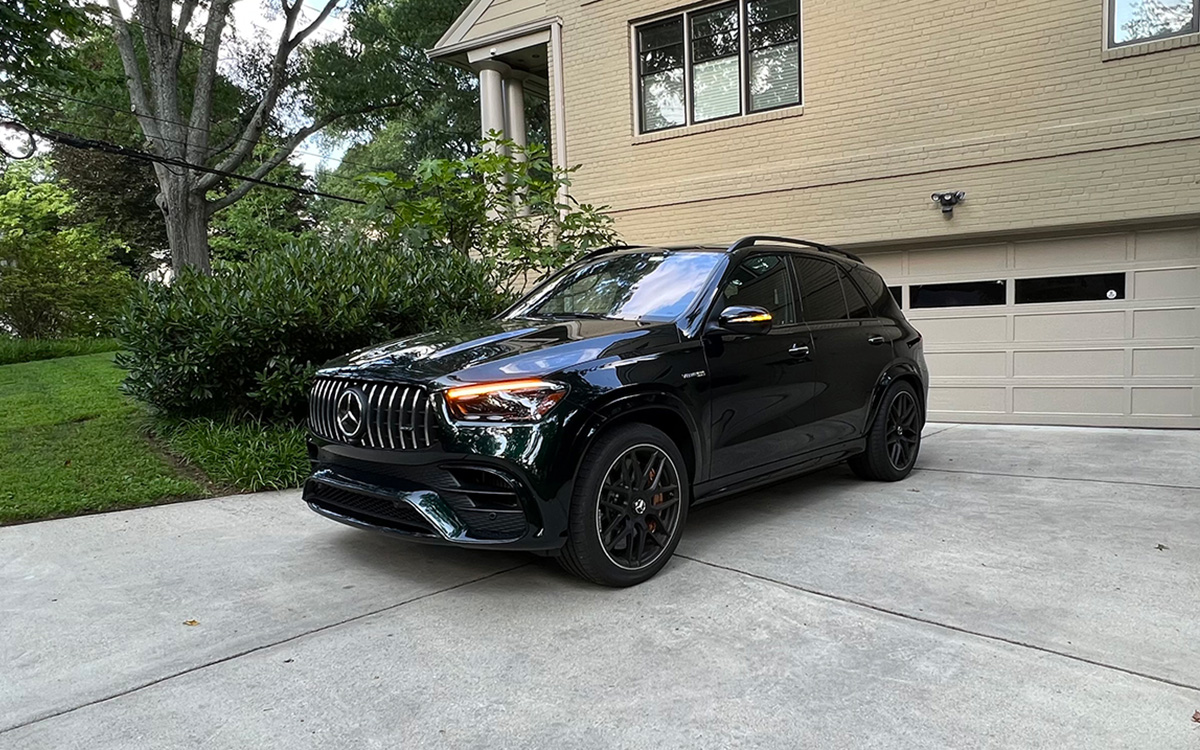
-

 Canada1 day ago
Canada1 day agoToronto Pride parade cancelled after pro-Palestinian protesters disrupt it
-

 Theater5 days ago
Theater5 days agoStephen Mark Lukas makes sublime turn in ‘Funny Girl’
-

 Baltimore4 days ago
Baltimore4 days agoDespite record crowds, Baltimore Pride’s LGBTQ critics say organizers dropped the ball
-

 Sports4 days ago
Sports4 days agoHaters troll official Olympics Instagram for celebrating gay athlete and boyfriend





